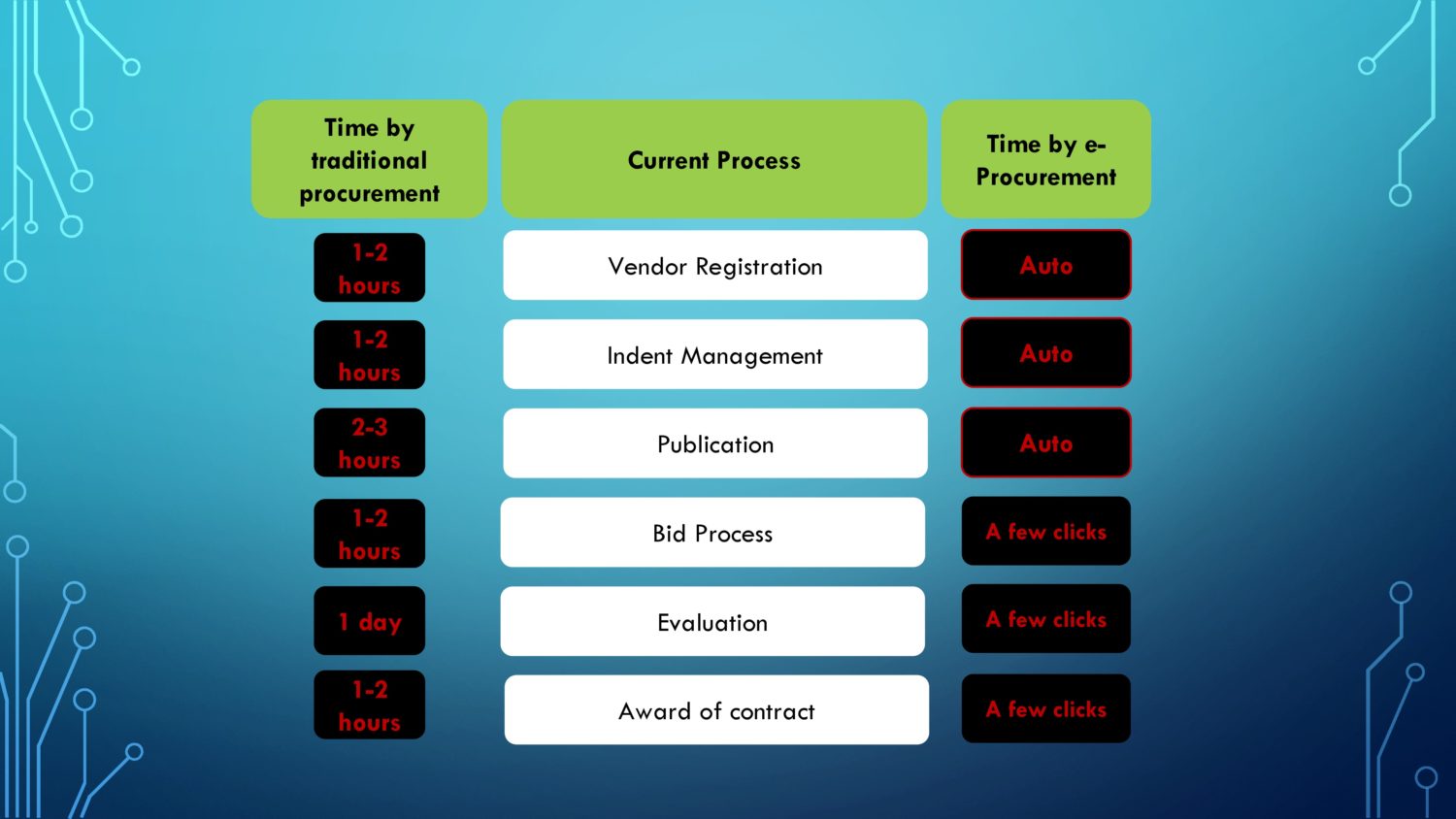Traditional procurement methods vs IT procurement process
Procurement methods involve the process of finding, agreeing to terms & acquiring goods or services. Though this sounds pretty simple and straightforward but only the experienced know how difficult it can get with a multi-layered process that involves tedious steps.
A traditional procurement methods starts with the identification of needs followed by an extensive process of exploration of supplier options to finally arrive at finalization of the supplier by fixing the price and all other terms including payment options, delivery time etc. There are several challenges involved in traditional procurement methods like: –
• High Manual Effort
• Long Cycle Time
• Lack of Past Data
• People Driven Not Process Driven
In this digital age, there is an easier way of procurement that uses IT procurement process and is called e-Procurement. e-Procurement covers all the steps in procurement including identification of needs to compare the list of suppliers. A comparison chart between IT procurement process and traditional procurement process is shown below:

Major advantages of eProcurement are: –
1. Better visibility & transparency
e-Procurement allows businesses to track cost on a continuous basis and identify & address any gaps. It also helps in contract compliance, track vendor SLAs and implements scorecards, leading to higher savings and increased productivity from suppliers.
2. Increase operational performance
e-Procurement helps in automating some of the internal procurement processes such as purchase order, RFX events, and supplier evaluation, that leads to higher operational efficiency
3. E-catalogues and increased standardization
Electronic catalogs make supplier product offerings available electronically and provide buyers more visibility into product and price information. With the increased popularity of these catalogs, suppliers are moving toward offering a more standardized product, thereby providing buyers the ability to compare offers across suppliers more easily.
4. Internal integration
e-Procurement helps increase collaboration across internal departments by elimination information asymmetries
5. Increased data accuracy
When the process is conducted electronically, the resulting streamlining reduces opportunities for human error. The repository of documents also makes it easy to refer to older orders and contracts to ensure contract compliance, thereby reducing data inaccuracies. This also helps in increasing the negotiable leverage.
6. Increase the reach of the supplier
eProcurement applications generally support different currencies, languages and logistics options, providing the ease to source from countries across the globe.
7. Real-time reports and past analytics
eProcurement helps you be updated by providing real-time reports of the movement of materials. It also helps in avoiding any kinds of errors by providing analytical reports of past data.
E-procurement automates the procure-to-pay (P2P) process, making it more seamless and robust, thereby helping organizations gain both tangible and intangible benefits. It also acts as a repository, which helps in automating several workflows.
e-Procurement not only brings down the total cost of the procurement but helps SMEs to save a major chunk of their time, which they can utilize to think of new ways to grow their business.

